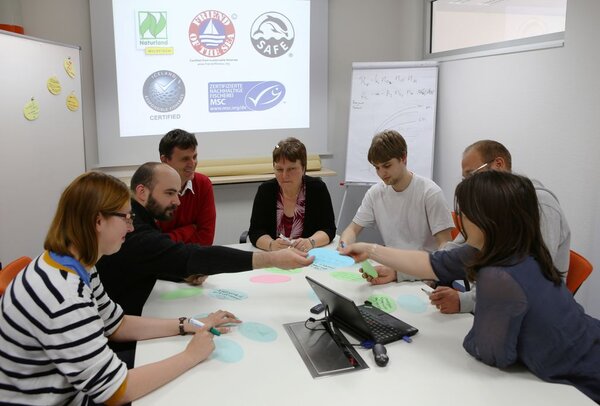Expertise
Group discussion
Marie von Meyer-Höfer and Peter Elsasser | 29.06.2022
The group discussion is a qualitative survey method. Under the guidance of a moderator, several people who usually do not know each other discuss a specific topic.
Using a guideline developed in advance, the moderator asks the whole group various open questions on the research topic with the aim of identifying the range of different views, perceptions and opinions, but also to uncover specific behaviours or underlying structures of consciousness. In conversation with each other, the participants express their respective attitudes, justify them if possible and specify their positions during the course of the discussion.
The group discussion is particularly suitable for identifying a broad spectrum of views, attitudes and reactions in a short time and with relatively little effort. The great advantage of this method is that the joint discussion on the respective topic not only produces many results, but also reveals unexpected aspects in a dynamic process.
Motives of the consumers are revealed
This is illustrated by the following example: In a group discussion with consumers about their perception of current dairy farming, the participants discussed, among other things, the cows' feed. While some participants assumed that natural feed such as grass and hay was used, others interjected that in fact concentrated feed was often fed. In response, some participants were critical and described discomfort. In the course of the discussion, it became clear that not only the aspect of feeding that is assumed to be natural and animal-friendly is relevant for consumers, but also the assumption that concentrate feed contains many artificial additives. "The fact that as a consumer you don't even know exactly what concentrated feed ultimately consists of also makes you sceptical," the panellists noted.
In particular, motivations that are not captured by standardised surveys or literature research can be revealed in detail by the group discussion. Therefore, it is often used in conjunction with (mostly quantitative) empirical surveys.
The group discussion is usually audio- or sometimes video-recorded and then transcribed to obtain text files. These texts are then subjected to qualitative content analysis for evaluation, for example.







